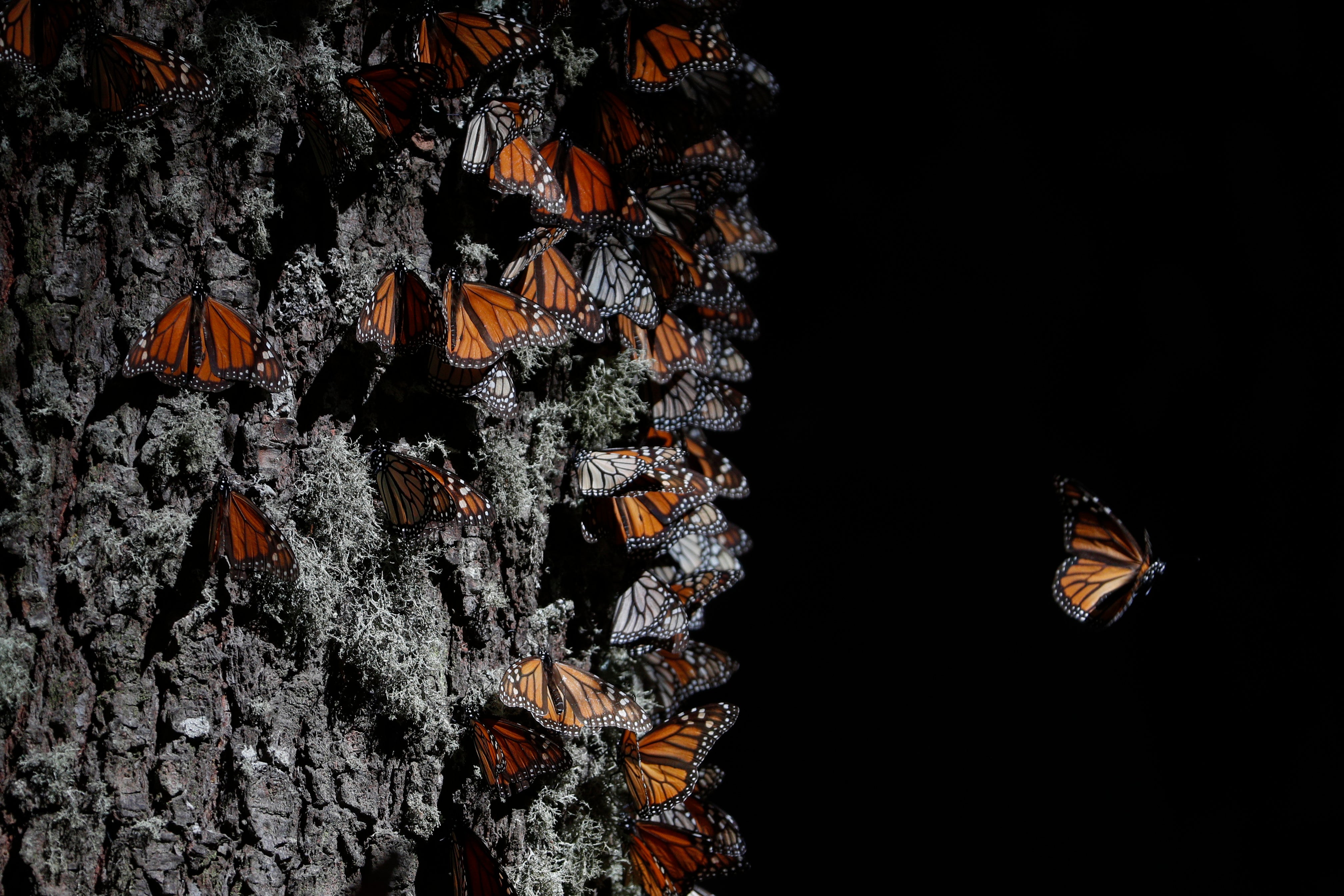Monarch butterflies return to Mexico on annual migration
The first monarch butterflies have appeared in the mountaintop forests of central Mexico where they spend the winter

Your support helps us to tell the story
From reproductive rights to climate change to Big Tech, The Independent is on the ground when the story is developing. Whether it's investigating the financials of Elon Musk's pro-Trump PAC or producing our latest documentary, 'The A Word', which shines a light on the American women fighting for reproductive rights, we know how important it is to parse out the facts from the messaging.
At such a critical moment in US history, we need reporters on the ground. Your donation allows us to keep sending journalists to speak to both sides of the story.
The Independent is trusted by Americans across the entire political spectrum. And unlike many other quality news outlets, we choose not to lock Americans out of our reporting and analysis with paywalls. We believe quality journalism should be available to everyone, paid for by those who can afford it.
Your support makes all the difference.The first monarch butterflies have appeared in the mountaintop forests of central Mexico where they spend the winter, Mexico’s Environment Department said Saturday.
The first butterflies have been seen exploring the mountaintop reserves in th states of Mexico and Michoacan, apparently trying to decide where to settle this year.
The monarchs have shown up a few days late this year. Normally they arrive for the Day of the Dead observances on Nov. 1 and Nov. 2. Mountainside communities long associated the orange-and-black butterflies with the returning souls of the dead.
The department said the butterflies were seen around their three largest traditional wintering grounds — Sierra Chincua, El Rosario and Cerro Pelón in Michoacan state.
The main group of butterflies is expected to arrive in the coming weeks, depending on weather conditions, the department said in a statement.
It is too early to say how big this year's annual migration from the United States and Canada will be. Those counts are usually made in January, when the butterflies have settled into clumps on the boughs of fir and pine trees.
The annual butterfly count doesn’t calculate the individual number of butterflies, but rather the number of acres they cover when they clump together.
Last year, 35% more monarch butterflies arrived compared to the previous season. The rise may reflect the butterflies’ ability to adapt to more extreme bouts of heat or drought by varying the date when they leave Mexico.
Each year, generally in March, the monarchs migrate back to the United States and Canada.
Drought, severe weather and loss of habitat north of the border — especially of the milkweed where the monarchs lay their eggs — as well as pesticide and herbicide use and climate change all pose threats to the species’ migration. Illegal logging and loss of tree cover due to disease, drought and storms plague the reserves in Mexico.
This year, the International Union for the Conservation of Nature added the migrating monarch butterfly to its “red list” of threatened species and categorized it as “endangered” — two steps from extinct.
The group estimates the population of monarch butterflies in North America has declined between 22% and 72% over 10 years, depending on the measurement method.
The monarchs' migration is the longest of any insect species known to science.
After wintering in Mexico, the butterflies fly north, breeding multiple generations along the way for thousands of miles. The offspring that reach southern Canada begin the trip back to Mexico at the end of summer.